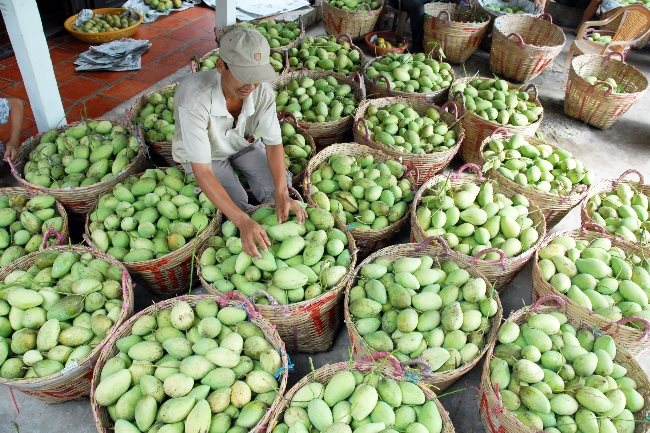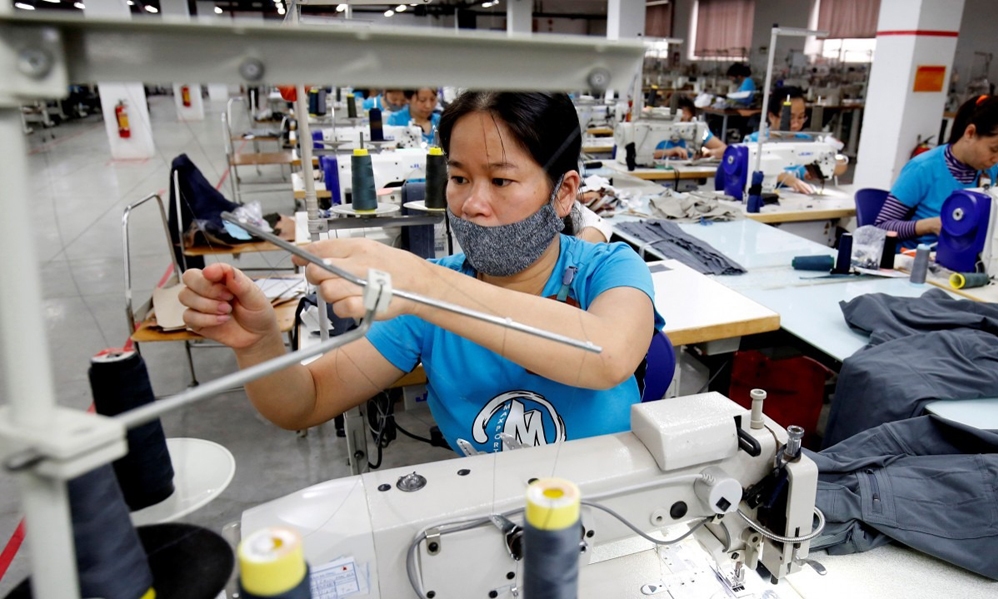Still a key export earner
Still a key export earner
Though agro-product exports recorded flat growth in 2019, the products remain a key contributor to Vietnam’s trade surplus achievement

Statistics released by the International Trade Center (ITC) show that among 12 countries with a monthly export turnover of US$20 billion upward (statistics available by October 2019), only two countries, including Vietnam, posted positive export growth while the world’s 10 remaining leading exporters suffered negative growth.
In this context, though Vietnam’s total exports in the first 11 months of 2019 were nearly US$242 billion, up only 7.9% year-on-year compared with the growth of 14.6% in the year earlier period, the country will surely remain a star performer in international trade in 2019. Therefore, with exports in the final month of the year just on par with that of December 2018, Vietnam’s imports-exports in 2019 will surpass US$500 billion and the country can completely improve her ranking in the list of the world’s largest exporters.
One unexpected, positive result is that the economy has turned to unprecedented trade surplus. While the target is to contain trade deficit at below 3%, the economy actually enjoyed a record surplus of nearly US$11 billion in the first 11 months of the year.
These achievements play a very important part in “helping the country beat the economic growth target while macro-economic stability is better maintained, inflation is curbed and major balances of the economy are consolidated and expanded,” as emphasized in the Government’s report to the National Assembly recently.
A glance into this bright picture shows that agro-product exports recorded flat growth, but this is still a welcome achievement.
Statistics of the General Department of Vietnam Customs show that exports of key agro-products in the first 11 months of 2019 were merely US$34.35 billion, just US$300 million higher than the figure in the year earlier period and up only 0.9% year-on-year. Meanwhile, the share of agro-products in total exports fell to 14.2% from 15.2% in the year earlier period, meaning that agro-product exports have slowed down the overall export growth.
A different reality
In general, data of the World Bank show that agro-product prices in the global market have been on a downward trend since 2011, so Vietnam’s agro-product exports have had to face this unprecedented challenge.
In specifics, the global agro-product price index continuously declined from the peak of 151.5% in 2011 (the index in 2010 is 100%) to 86.9% in 2018. Following this trend, the average agro-product prices in the first 11 months of 2019 fell to 83%, down 4.6% from the year earlier period.
The price fall naturally makes the value of exports in the global market to contract correspondingly. A calculation from customs statistics shows the big impact of the global agro-product market on Vietnam’s agro-product exports.
The country’s exports of agro-products with available statistics for volume and value in the first 11 months of 2019 were nearly US$11.9 billion, down by nearly US$1 billion and 7.7% from the year earlier period. However, in terms of prices in the same period of 2018, exports of those agro-products were nearly US$13.5 billion, so their revenue in practice has increased by more than US$600 million and 4.8% year-on-year. This means that Vietnam suffered price losses of more than US$1.6 billion in exports of those agro-products in the 11-month period, equivalent to 13.5% of the actual export revenue.
Of note, while agro-product exports were facing a big challenge, exports of two other groups of commodities, fuel-mineral and manufactured goods, were much less difficult. Exports of commodities of the two groups with available statistics for volume and value in the 11-month period were nearly US$14.3 billion, so the country suffered only more than US$1.1 billion in price losses, equivalent to 8%.
These figures show that despite increasingly bigger challenges, Vietnam has made tremendous effort in boosting agro-product exports, mainly to offset the huge price losses; so the remaining room to leverage exports of all commodities of the agro-product group to positive growth is very small.
In fact, while facing big difficulties in China and South Korea and a slowdown in the ASEAN market, Vietnam has boosted exports to the United States and to a lesser extent Japan.
Customs statistics for the first 11 months of 2019 show that while exports of key agro-products to China dropped by US$387 million and 4.8%, to South Korea by US$206 million and 10.5% and to other markets by US$226 million and 2%, and exports to ASEAN grew insignificantly; exports to the United States increased strongly by US$900 million and 13%, turning the states into Vietnam’s biggest agro-product export market in place of China earlier. Exports to Japan also recorded significant growth, with US$224 million and 8.1%.
With such tremendous export efforts, agro-products have continued to contribute significantly to the record trade surplus achievement.
Statistics show that of the total trade surplus of over US$10.9 billion in the first 11 months of 2019, the surplus of agro-products accounts for US$8.8 billion.
In sum, despite great challenges from the price fluctuation in the global market as well as from a number of important markets, agro-product exports, with tremendous efforts, have been able to gain new achievements which have contributed significantly to the economic feats in 2019.
















